Interview with Amparo Muñoz Morellà carried out by Salted Butter.
Taiwan based social inovation Project.
Part I – Our story
1. Can you tell us the story of the founding of ANDANAfoto? What inspired you to start this photography project?
ANDANA was born from a story of love and connection, not only between Javier and me but also with photography and the transformative potential of art.
Javier, with years of experience in underwater photography, and I, a psychologist passionate about art in all its forms, joined forces in a photography workshop for 100 people. This workshop, which invited participants to capture a personal vision of the Mancomunidad de l’Horta Sud, near Valencia, was a resounding success and culminated in an exhibition that sparked an enthusiasm in us and the participants that we couldn’t ignore.
Faced with the question, “And now… what will you do next?” we knew we had to continue.
We realized that we had found something powerful: photography as a tool to improve quality of life and personal well-being. We experienced this ourselves, and the participants who completed this training also expressed it to us. ANDANAfoto was a response to this revelation, an initiative inspired by the belief that photography, accessible and omnipresent in our society, can be a catalyst for personal development, authentic expression, and social change.
Today, more than ever in history, photography is a universal language. From the earliest moments of life, when a baby recognizes the image of their mother before being able to name her, to the complex visual narratives we construct as adults, the image is a vehicle for thought, memory, and change. Images not only document but have the capacity to transform the way we see and experience the world.
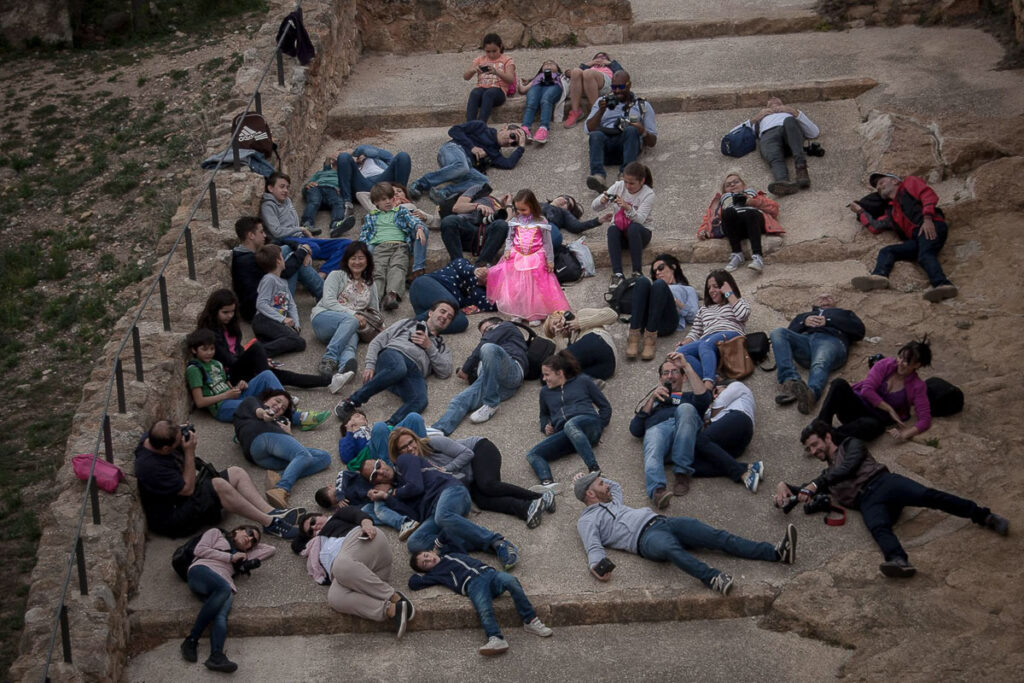
Workshop Your look at history, Montesa-Valencia. 2016
Throughout history, those who have mastered the image have exerted significant influence, and we aspire to use this power for the common good, inspiring through visual culture, education, and personal development, and fostering photographic expression from one’s own authenticity.
Photography is primary; it is thought and power.
2. What sets ANDANA apart from other photography training programs on the market
We are a training company that uses photography as a therapeutic tool and for personal development. Our training programs are unique and exclusive, based on a proprietary methodology that fuses photographic expression and visual culture to create meaningful and transformative training experiences.
We aim to make all our training experiences accessible to everyone, catering to all ages and abilities.
Our approach to photography is grounded in three main objectives:
1. Transforming education: We promote the use of photography as an educational tool, adapted to the realities of the digital world. We foster visual literacy from childhood and adolescence, empowering children and teenagers to develop a critical and reflective understanding of the images that surround us.
2. Fostering self-knowledge and personal development: We believe that photography has the power to change our perception of the world and ourselves. Through workshops and specialized training, we help people explore their identity and environment, using photography as a pathway to self-knowledge, healing, and personal well-being.
3. Using photography for social transformation: Photography is a powerful tool for giving visibility and empowerment to people, especially the most vulnerable. We collaborate with entities and administrations to use photography in community processes that promote social inclusion and positive change.

Children and youth photography workshop in the Librería Railowsky
We are not aware of any other project that integrally combines photography with personal growth and social transformation.
3. How would you describe the key strategies of ANDANAfoto? What influences guide your creative direction?
At ANDANAfoto, we are guided by three key strategies:
1. Meeting point for personal and social development: We encourage the gathering of people who share the desire to use photography as a tool for personal growth and social change.
2. Advocacy of photography as a creative tool: We consider photography as an art form accessible to everyone, capable of offering meaningful artistic experiences. We facilitate the exploration of life and the environment through an active role in creating images that reflect our truth and authenticity.
3. Documentation and dissemination of our activities: Through our blog, books, talks, webinars, and the new podcast “Eres aquello que miras” (“You Are What You See”), among other outreach activities, we make all our projects accessible. Our goal is to raise awareness and use photography as a tool for educational change, personal development, and social transformation.
4. Have there been a project that pushed you out of your comfort zone? How did you handle it?
Every project at ANDANAfoto is approached with thorough preparation, which allows us to face each challenge with confidence and creativity.
However, every project challenges us because each one is different. For example, working with a group of people with intellectual disabilities with the aim of increasing their confidence in preparing for job interviews, or with groups of young people subject to judicial measures.The complexity of emotions and the need to create a safe space for self-expression is a significant challenge.
We manage it by integrating psychological reinforcement actions during the creative process and ensuring constant support for the participants, resulting in deeply transformative projects for both them and us.
It’s also a challenge to prepare each lecture, sometimes for more than 100 people, for photography festivals or museums like the Centre Pompidou in Málaga.
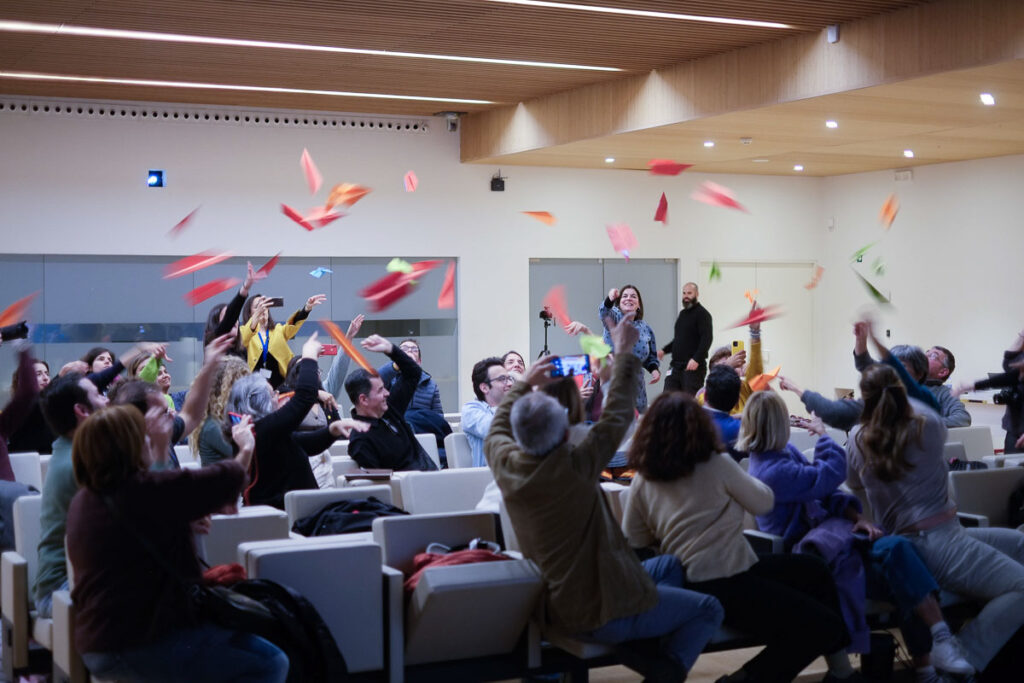
Photographic Experience “A time of one’s own” in CENTRE POMPIDOU MÁLAGA
We approach each project as a challenge, an adventure from which we learn.
5. How do you collaborate with clients to ensure their vision is realized in the final images?
Our methodology is based on the evidence that photography has the power to transform our way of seeing the world and, consequently, of feeling and perceiving reality.
This fosters processes of personal self-knowledge, empowerment, and crucial decision-making for achieving happiness. In workshops like “Photography to get to know yourself,” we use a theoretical foundation that combines psychology and contemporary art, allowing participants to explore their inner world and express their truth through images.Throughout the process, we guide participants to build images that not only represent what they see but also reflect who they are and what they feel.
The key is to allow each person to discover their visual voice and use it to tell their own story, to discover themselves and fall in love with what they see. Virginia Satir said that we can only love what we know well, and that is the message.
6. Can you share an example of a successful collaboration with another creative professional or organization??
We have had the privilege of collaborating with various institutions and organizations on projects that use photography as a tool for social inclusion and personal development.
A notable example is our collaboration with La Paz Hospital in Madrid, where we worked with long-term hospitalized children, allowing them to explore their creativity and express themselves through photography when they couldn’t leave the hospital or their home.
Another significant collaboration is with ASPRONA, an organization that supports people with intellectual disabilities, where we use photography to promote social inclusion and personal empowerment. Similarly, with the Social Services team of Catarroja City Council, where we conducted a workshop with people from vulnerable groups.
These projects have not only been successful in terms of results but have left a deep impact on all involved, offering another way to perceive themselves and demonstrating the transformative power of photography in difficult contexts.
Part II – Self-care and healing can be fostered through art
7. How do you see photography as a tool for self-care and personal healing?
Art has long been a channel for expressing what words cannot articulate. Photography may have been one of the less exploited arts in the field of personal growth or therapy, possibly because it seems to require technique and specialization. But today, in the era of post-photography, therapeutic photography is emerging because it has two fundamental advantages: accessibility and immediacy. The camera is almost an extension of our body, allowing us to capture our experiences instantly.
Photography as a therapeutic tool allows people to explore their identity, emotions, and experiences in a visual and tangible way. Through images, we can access parts of ourselves that might be hidden or difficult to express verbally.
In all cases, the premise is that thought is visual; we think in images. Our past, future, and fantasies are mentally elaborated in the form of images; when we name a word, it automatically becomes an image in our mind. The limbic system, which includes crucial structures like the amygdala, hippocampus, and cingulate gyrus, uses images to process emotions and memories, influencing our lives.
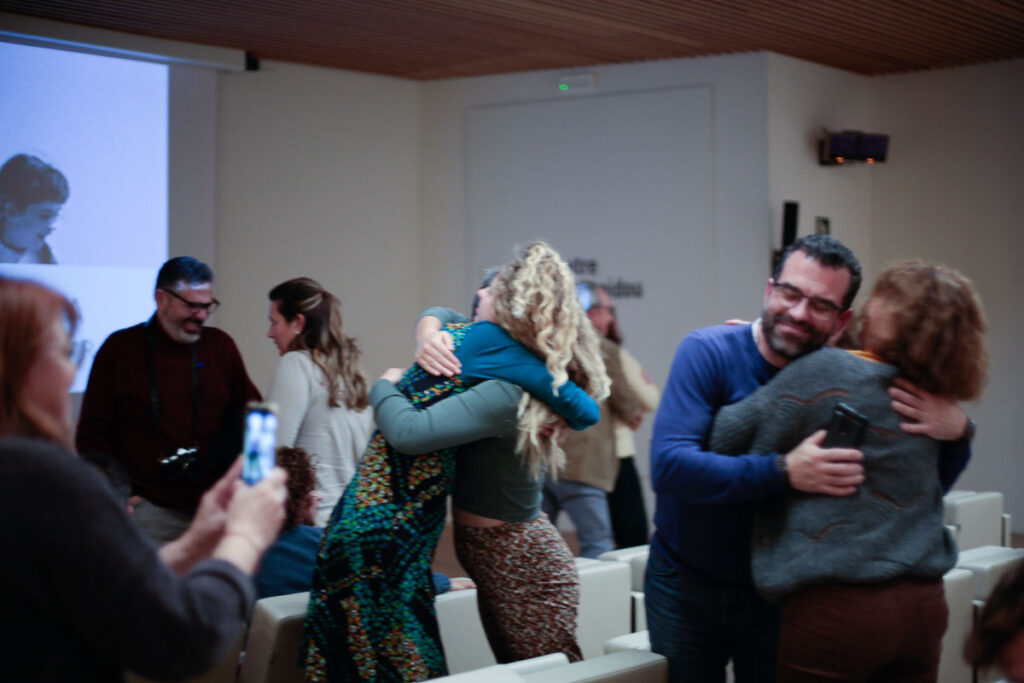
Photographic Experience “A time of one’s own” in CENTRE POMPIDOU MÁLAGA
Whether through photography, art, or simply observing the images around us, we have seen how photography allows people to tell their stories in a richer and more meaningful way, helping them to better understand who they are, who they were, and who they can become.
8. Can you explain the concept behind your ‘Photography to Get to Know Yourself’ workshop? How does it help participants in their journey of self-discovery?
The workshop “Photography to get to know yourself ” is designed to help participants use photography as a powerful tool for self-knowledge, personal expression, and development.
Through a combination of psychological theory and creative processes of contemporary art, participants learn to look at the world with new eyes and capture images that reflect their true essence.
The workshop includes the study of artists who have worked with their lives to produce exciting and transformative works and proposes exercises that guide participants to express themselves with the image and achieve photographs that have meaning in an intimate and individual process. Additionally, we recommend music that produces a greater connection effect with each of the concepts being worked on.
From personal experience, participants discover that with photography, the perception they have of themselves changes. They discover an inner world with enormous potential that they are capable of translating into powerful and authentic images that reflect their truth
The workshop also helps participants identify and work on specific aspects of their lives, such as self-esteem, fears, relationships, and goals, using photography as a medium to process these elements and bring them to light
Many participants have commented that the workshop has allowed them to see themselves in a new way, sometimes surprisingly so. In some cases, this has led to real changes in their lives, as they have discovered new ways of seeing themselves and relating to the world.
9. What role does self-portraiture play in the process of self-reflection and healing?
Self-portraiture in therapeutic photography is a practice that goes beyond mere visual representation, serving as a powerful vehicle for self-knowledge and the exploration of emotions and identity.
Through self-portraiture, we can explore internal facets that may be hidden or repressed, engaging in a process of introspection that connects the body and mind. I invite you to discover how to create a self-portrait, challenging the conventional idea that it must include the face or body. We will reflect on the importance of personal narrative in self-portraiture, which allows us to reimagine and transform ourselves, facilitating self-acceptance and emotional growth.
Self-portraiture is a valuable therapeutic tool, capable of triggering significant reflections in therapy contexts, helping individuals explore and redefine their identity over time.
In the formative experiences that involve self-portraiture, we invite participants to challenge the conventions of self-portraiture, exploring not only the face or body but also the stories, contexts, and emotions they wish to convey. This process facilitates self-acceptance, emotional healing, and self-reimagining, allowing individuals to transform their personal narrative.
10. How do you design your workshops to ensure they provide a supportive environment for participants?
When we conduct in-person workshops, we ensure the creation of a safe and welcoming space where each person can express themselves without judgment and explore. Each workshop is carefully designed to foster personal trust and respect, guiding participants on a journey of self-discovery and healing.

SEE AND REVEAL – In-person workshop on self-knowledge through photography
Our methodology is online but includes support when needed, whether technical or psychological. Each participant has the opportunity to share their work through specific hashtags on Instagram for each training session. In longer workshops, live sessions are included for reflection and dialogue, where participants can share their experiences and learnings.
The process of self-knowledge is an intimate and individual journey. Getting to know oneself through photography can only be achieved through autobiographical and intimate processes, in a space that is personal and where only one can make the necessary interpretations, projections, and insights. If someone else were to make this interpretation, the process would no longer belong to the individual and would lose its intended meaning.
The more explanations one receives, the less space there is for creativity and the manifestation of emotions. It is very important for the person to feel free, to have no judgments about the images they create, and to know that everything, absolutely everything they create, will be perfect because it is about their own gaze.
Part III – Photography and Social Impact
11. Can you tell us more about how ANDANAfoto is using photography to support people in vulnerable situations?
Since its inception, ANDANA has been committed to the idea that photography can be a powerful tool for social change. We work with various organizations and communities to use photography in projects that promote inclusion, visibility, and empowerment.

Photography for social inclusion for ASPRONA-Valencia 2019
We have used photography to give a voice to those who are often silenced or ignored, such as women victims of gender violence, people at risk of social exclusion, and individuals with disabilities, among others. Through participatory workshops, we help people tell their stories and share their perspectives, creating an impact on their lives and communities. In this journey, it is essential to exhibit and showcase the work as professionally and dignified as possible.
In addition to the training we offer to interested individuals, we collaborate with educational and healthcare institutions to integrate photography into personal development programs, providing tools to explore and express identity, overcome trauma, and build a stronger sense of self-esteem and belonging.
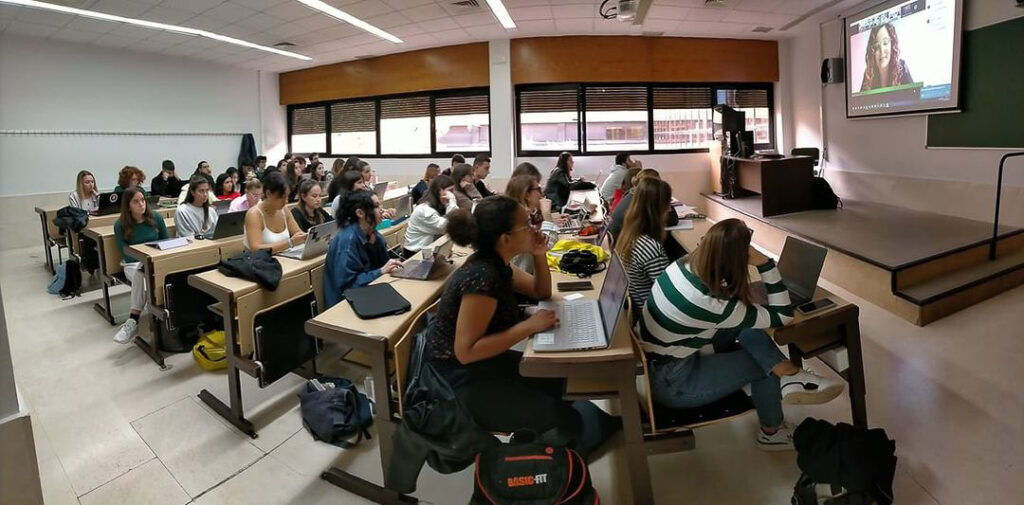
If anything drives social transformation, it is diversity. Faculty of Social Sciences of the University of Salamanca.
12. How can photography contribute to raising awareness of social issues?
Throughout history and today, in a world flooded with images, photographs tell stories, make realities visible, and provoke real change. We believe that photography can be a crucial tool for raising awareness about social issues, prompting people to reflect on the kind of life we lead and the world we want.
We work to ensure that people create images that also touch the heart, inspiring a better world. Photography can illuminate injustices, promote intercultural understanding, and empower communities and the most marginalized individuals.
13. What is your vision for the future of ANDANAfoto? How do you hope it will grow and evolve?
Our vision for the future is to continue expanding our impact, using photography as a tool for personal development, social transformation, and well-being.
We aspire to become a global reference in the use of therapeutic and educational photography, offering training and projects that reach more people and communities around the world.
We want to continue innovating in our methodology, exploring new ways to integrate photography with other disciplines such as psychology, education, social sciences, as well as the arts: theater, writing, or crafts. Our goal is to create even more enriching and transformative formative experiences.
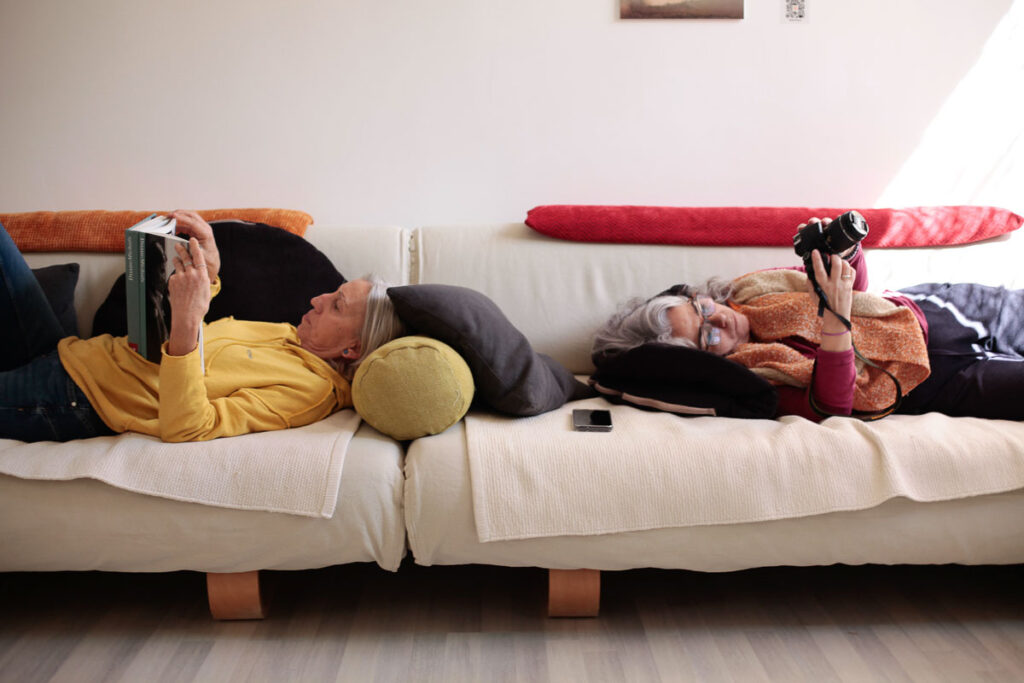
WRITING THE IMAGE – In-person workshop on self-knowledge through photography and writing
Additionally, we plan to strengthen our partnerships with institutions and organizations, both locally and internationally, to bring photography to more contexts and contribute to the creation of a more just, inclusive, and conscious world. Our objective is to help people find their visual voice, discover themselves, and tell stories that matter, both on a personal and collective level.
Part IV. How we arrive at personal development through photography
14. In what ways can photography foster personal growth and development?
Photography acts as a mirror that reflects not only the outside world but also our inner world.
When we create an image, we do so with everything we are—our knowledge, concerns, experiences, visual culture, and, ultimately, our way of viewing the world.
Creating an image confronts us with our emotions, experiences, and perspectives. This process shows us who we are, what we value, and how we relate to our environment, thereby facilitating personal growth and development.
Moreover, photography allows for an approach to mindfulness, to the here and now, to contemplation, thus enabling us to develop observation skills and mindfulness, which are essential for self-knowledge—a process that never ends.
15. Can you share some success stories of people who have experienced significant personal development through your workshops?
Over the years, we have been fortunate to witness incredible transformations in the people who have participated in our photography workshops.
Several people have told us that sometimes, they need to make changes in their lives after engaging in some of the exercises.
One example we remember is María. In the workshop “Photography to get to know yourself,” the first exercise, called “The Portrait of Absence,” invites participants to photograph a space in their home that represents them, a place that reflects their identity without them being physically present. When María completed this exercise, she realized something she had never noticed before: she didn’t have her own space in her house.
This discovery was so impactful that it led her to have a deep conversation with her family, resulting in significant changes in her life. María managed to create her own space, both physical and emotional, which allowed her to reconnect with her hobbies and regain her voice in her family environment.
Another notable story is that of David. After an intense argument with his professor over a grade in his photography studies, which he felt was unfair, David decided to channel his frustration through his camera, using what we call an “expressionist gaze.” He went to an abandoned area and photographed with an emotional intensity that reflected his inner state: blurry images, fragments of his body, debris, dry plants, but also the sky and birds. At the end of that session, David said he felt at peace, as if he had released all the tension. When he presented his new work to the professor, the professor congratulated him for creating a deeply personal project.
Our workshops can trigger profound changes in people. Photography not only allows them to explore their emotions and experiences but also offers them a way to transform those explorations. It is a privilege to be able to drive these changes and accompany each person on their journey.
16. What techniques or exercises do you incorporate into your workshops to encourage participants to explore their inner selves?
In our workshops, we use psychology and the creative processes of contemporary art; throughout history, there have been artists who have worked with their lives and fears. We use:
- Visual culture: We introduce participants to artists who have used photography to reflect on their lives, which inspires them to consider their own stories from new perspectives.
- Self-reflection exercises: Through practical activities, participants are guided to create images that represent their own psychological aspects, aspirations, and experiences, visualizing intimate spaces in a tangible way.
- Environment exploration: We encourage the use of the environment and the family, the tribe, to better understand identity and belonging.
- Visual narrative: Participants learn to build narratives from their photographs, personal photographic projects that facilitate a deeper connection and promote self-exploration.
By the end of the workshop, participants discover that through photography, they can initiate authentic and meaningful personal growth processes.
17. How do you see the connection between creativity in photography and personal empowerment?
A person grows and empowers themselves when they decide to know themselves and begin the journey of their own learning. The connection between creativity in photography and personal empowerment is deep and direct. Creative processes allow us to express ourselves authentically, and in doing so, we discover new facets of ourselves that give us the strength needed to make conscious decisions about our lives; we dare to challenge social norms and expectations, affirming our unique identity and voice.

Cyanotype as an identity tool
Photography, as a creative tool, helps us communicate our thoughts and emotions in ways that are often more effective than words, strengthening our self-esteem and confidence. This creative journey gives us the strength needed to face every life challenge.
Part V. Impact of photography on health
18. What inspired you to offer workshops that focus on self-care and self-development through photography?
When we think about how we live today, we realize that the pressure and expectations around us are very high. We all face challenges that can affect our mental health, which essentially is how we feel, think, and relate to others. Mental health determines how we face problems, how we see ourselves, and how we manage our emotions.
Unfortunately, many people experience problems such as depression or anxiety at some point in their lives, which shows us the importance of finding effective ways to care for our well-being. This is where photography comes in. Artistic creation, and especially photography, is not just a form of expression; it also has a positive impact on our mind and emotions.
MMy interest in photography goes beyond creating beautiful images. I realized that through images, people can connect with their feelings, explore their experiences, and find insights that heal. This led me to further my education in various schools of psychology, such as humanistic, Gestalt, and psychoanalysis, and to incorporate neuroscience to better understand how our mind works and how we can use photography as a tool to improve our mental health.
After several years of working and observing how photography workshops help people feel better, I know we are on the right path. Combining psychology with photography has created a unique approach that really makes a difference in people’s lives, helping them grow and overcome their personal challenges. And that is what inspires me to continue offering these workshops: the desire to contribute positively to the mental and emotional health of people through photography, offering a space where they can explore, heal, and grow.
19. How do you measure the impact of your workshops on the personal growth and well-being of the participants?
We use several evaluation methods. At the end of each workshop, participants complete a questionnaire that allows them to reflect on their experience and perceived changes in their personal growth and emotional well-being.
In face-to-face workshops, we carry out more detailed evaluations, including subsequent follow-up, to monitor how participants have made changes and are feeling emotionally. These evaluations provide us with valuable information about the effectiveness of our methodologies and help adapt and improve future workshops.
20. What future plans do you have to expand the themes of self-care and healing in your photography workshops?
Our online training, making our workshops accessible to people of all ages and backgrounds. We are also committed to dissemination, offering conferences and collaborating with associations and entities that share our mission.
In addition, we have started a collection of books titled “Photography to get to know you”, with the first volume already published, titled You are what you look at, and a second in preparation. This multifaceted approach will allow us to reach a broader audience and continue to promote self-care and healing through photography.
In the future, we plan to continue expanding our photography workshops with the aim of reaching more people by offering practical and accessible tools for their well-being.
We want anyone, regardless of age or background, to benefit from photography as a form of self-knowledge and healing.
First, we will continue to expand our online trainings. This will allow people from all over the world to access our workshops from wherever they are, breaking geographical barriers and facilitating the participation of a more diverse audience. We believe that mental health is everyone’s right, and our mission is to make our resources available to anyone who needs them. AAdditionally, we are deeply committed to outreach. For this reason, we continue to collaborate with associations and entities that share our vision, participating in conferences and creating strategic alliances to spread the positive impact that photography can have on mental health and personal development.

WOW Factor 2022 – Mateo Inurria School of Art in Córdoba
We are also excited about the evolution of our “Photography to Get to Know Yourself” book collection. The first volume, ‘You Are What You See’, has been well received, and we are already working on a second volume. These books not only complement our workshops, but also make visible artistic works that offer an opportunity to delve deeper into a journey of self-discovery through photography, providing a tangible resource that can be explored at your own pace.
We have just launched a project called “Gifts from the Street Project”. This is a global movement that seeks to inspire people to connect with their environment, explore their dreams and improve their mental well-being. Through this project, we encourage people to find beauty and meaning in the everyday, using photography as a tool to discover new perspectives and achieve their personal goals.
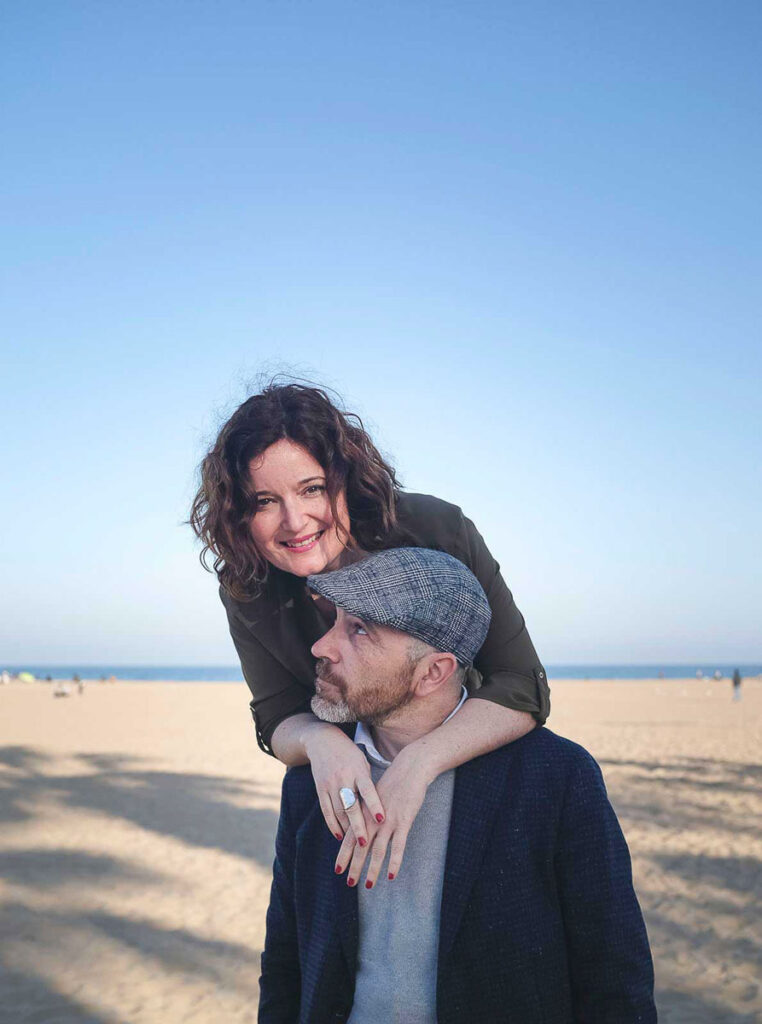
Javier and I enjoy every experience, we will continue to innovate and expand our initiatives so that more and more people can experience the transformative power of photography.
21. How do you think the practice of photography can contribute to mental health and well-being in a broader context?
LThe practice of photography has a rich history as a therapeutic tool, used by doctors and psychiatrists over time to promote emotional and mental well-being. Through techniques such as self-recognition, the exploration of body self-image, the expression of emotions, the review of the family album and the analysis of one’s own images, photography allows people to connect with their experiences in a unique and meaningful way.

See and Reveal 2022. Three days of photography and self-discovery.
Participatory methodologies, such as the Photovoice or Fotovoz technique, prove to be effective in social intervention, helping communities tell their stories and become empowered. Participatory methodologies through photography have proven to be powerful and effective tools in social intervention. For over 25 years, I have worked with these techniques from my position as an accredited psychologist and social intervention expert. Initially, my approach was intuitive, but today, these methodologies are supported by a solid base of scientific research and evidence of their effectiveness.
22. What advice would you give to someone who is new to photography and looking to use it as a tool for self-care and personal growth?
My advice is to immerse yourself in exploration and practice. Research photography, take the time to educate yourself, and don’t be afraid to experiment. Photography is a means to document and express your experiences, so start by photographing what surrounds you, what inspires you and what moves you emotionally. Discover artists, be inspired by them and their processes.
It is essential that you write down your thoughts and reflections on the images you create. This documentation will help you discover deeper connections between your experiences and your creative process. Additionally, look for opportunities to showcase your work, whether at exhibitions, social media, or community groups. This visibility will not only help you validate your process, feel strong, and will also allow you to connect with other people.
It’s just about taking photos, discovering what you look at can become a powerful tool for your personal development.
Cómo citar este artículo How to cite this article
Al citar, reconoces el trabajo original, evitas problemas de plagio y permites acceder a las fuentes originales para obtener más información o verificar datos. Asegúrate siempre de dar crédito y de citar de forma adecuada.
By citing an article, you acknowledge the original work, avoid plagiarism issues, and allow access to the original sources for further information or data verification. Make sure to always give credit and cite appropriately.
Amparo Muñoz Morellà. (October 9, 2024). "All about ANDANA: Interview with Amparo Muñoz Morellà". ANDANAfoto.com. | https://andanafoto.com/en/all-about-andana-interview-with-amparo-munoz-morella/.

